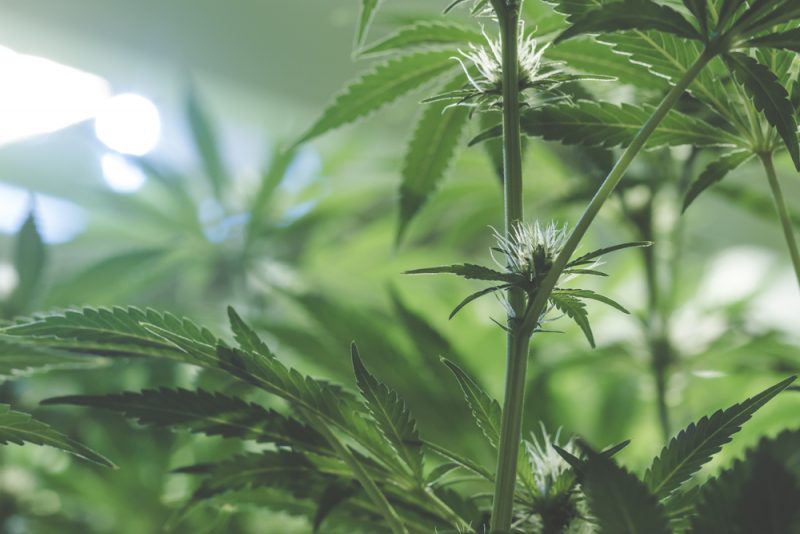<p style="text-align: justify;">Tetrahydrocannabinol (THC) and cannabinol (CBD) are the two components of the marijuana plant that scientists inquire about the most. Both also have the highest concentration of cannabis. THC and CBD share a special interdependent relationship and work together to increase therapeutic value; however, CBD does not have the psychoactive properties associated with causing the euphoria that the THC component causes. A patient’s sensitivity to THC ends up being a determining factor for doctors when calculating adequate doses for treatment. CBD can neutralize the psychoactive effect of THC; therefore, at higher levels of CBD, the THC will have lower effects. What are these components, and how and why do they affect the human body?</p>
<h2 style="text-align: justify;"><b>Tetrahydrocannabinol</b></h2>
<p><img class="aligncenter size-full wp-image-1467" src="http://incrediblemag.com/wp-content/uploads/2018/08/THC-versus-CBD-2-e1533102689802.jpg" alt="" width="800" height="534" /></p>
<p style="text-align: justify;">THC is the most abundant ingredient in most of the varieties of marijuana and has proven medicinal properties. At the same time, it is also the ingredient that provides the “high” commonly associated with the use of the drug. The therapeutic properties include stimulating the appetite and reducing nausea and vomiting. For patients with HIV, the appetite stimulation may offset weight loss associated with the virus. In patients undergoing chemotherapy, the reduction in symptoms can greatly improve quality of life and overall recovery. When combined with CBD, the two components work synergistically as an analgesic and anti-inflammatory. Other THC-related properties include relaxation and alteration of visual and audible senses.</p>
<p style="text-align: justify;">THC is an activator for cannabinoid receptors (CB1) that are present in the brain, which is the reason that the main effects of the molecule are seen in this area. The effects of the drugs are specific to the mind and can increase sensory functions with all the human senses, including sexual stimulation in men and women and the modification of time and space perception. However, experts do not consider all the effects as positive. In cases of prolonged use, memory alterations and short-term memory loss may be present. Furthermore, at high levels of THC, side-effects can include anxiety, paranoia, and tachycardia, among others.</p>
<h2 style="text-align: justify;"><b>Cannabidiol</b></h2>
<p><img class="aligncenter size-full wp-image-1468" src="http://incrediblemag.com/wp-content/uploads/2018/08/THC-versus-CBD-e1533102697843.jpg" alt="" width="800" height="534" /></p>
<p style="text-align: justify;">The main reason that these components have beneficial effects when used as medicine is that some of the molecules in cannabis mimic chemicals produced by the human body used to maintain health, called the Endocannabinoid System (ECS). The plant also has other active ingredients, including cannabidiol. The importance of this molecule has increased in the last few years because of the growing evidence of medical benefits. Furthermore, since the compound does not have the psychoactive properties of THC, doctors, scientists, patients, and lawmakers widely accept its use as medicinal, including in forms like cbd vape oil. Like THC, CBD also shares properties that help reduce nausea and vomiting. Furthermore, a scientific inquiry published in <i>Current Drug Safety</i> in 2011 titled “Safety and Side Effect of Cannabidiol, a Cannabis Sativa Constituent” concluded that the drug was safe for human and animal use.</p>
<p style="text-align: justify;">Among the most interesting statements made by proponents of the drug is the claim regarding its alleged cancer-fighting properties. However, results of scientific studies provide differing results, which makes it difficult to reach conclusions. Nevertheless, most of the past issues have revolved around access to the drug and questions of legality, which made research difficult, and, as states have increased access and softened laws, scientists and medical professionals have been able to conduct more research. Among such research is an investigation conducted by Ashutosh Shrovastava, Paula Kuzontkoski, Jerome Groopman, and Anil Prasad titled “Cannabidiol Induces Programmed Cell Death in Breast Cancer Cells by Coordinating the Cross-talk between Apoptosis and Autophagy,” published in <i>Molecular Cancer Therapeutics</i>. The researchers conclude that CBD derived from a cannabis plant effectively kills breast cancer cells in a targeted manner. These scientific studies show promising results in multiple areas and imply that professionals will continue to examine the plant’s medical.</p>

THC Versus CBD
